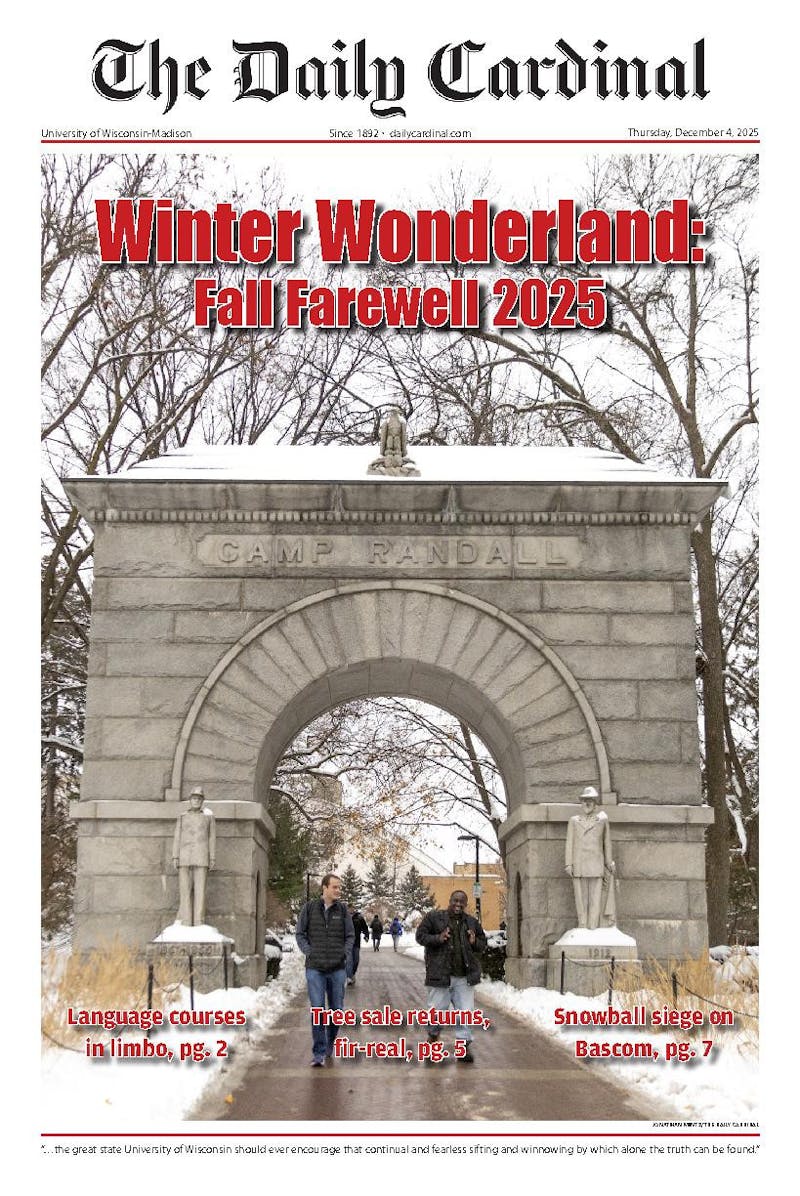It is often said that one can learn more from defeat than from victory. It might be useful to add that an even greater level of knowledge can be acquired from a mixture of both defeat and victory. And so we are faced with this week's elections.
Between upsets in Georgia and miraculous holds in New Hampshire and Colorado, the White House party managed to gain seats in the House for the second midterm election in a row, only the fourth in U.S. history, and take Senate control away from the Democrats. Meanwhile, Democrats made out well on governorships, taking the states of Pennsylvania, Illinois and Michigan while winning upsets in Alabama, Oklahoma and Wyoming, among others. Our own Wisconsin elected Jim Doyle over the bumbling Scott McCallum. For the first time in eight years, a majority of Americans will live under Democratic governors.
What is to be made from these contradictory results? We need to examine where national Democrats went wrong. Clearly, Tom Daschle and Dick Gephardt had a lot of things going for them, such as a sluggish economy, corporate scandals and a lot of seemingly weak incumbent Republicans to take on. Nevertheless, seemingly invulnerable Senator Max Cleland, D-Ga., lost re-election along with Democrats elsewhere who hadn't looked to be in nearly as good a position. Democrats had no clear messages on any of the previously mentioned issues, too afraid to take a stand one way or the other. Healthy moderation crossed the line into jellyfish indecision, and Democratic candidates for national office paid the price.
One might suppose it was just a bad year for Democrats all around, but results on state houses quickly paint a different picture. Governors-elect such as Pennsylvania's Ed Rendell, Kansas' Kathleen Sebelius and Oklahoma's Brad Henry were able to craft platforms that avoided hot-button \social issues"" like abortion and gun control which divide the electorate and only harm the Democrats overall. Instead they put out clear plans on education, health care, crime-fighting and economic development. They managed to earn the trust of the electorate where the national Democrats failed.
One thing the Democratic Party truly needs is a change of focus. Democrats need to become more forceful, and by this I do not mean more left-wing, simply stronger on moderate stances, spelling them out clearly. Instead of being the gun control and abortion party, and being astoundingly vague on all other issues, Democrats need to formulate coherent messages that appeal to direct and immediate needs of people, as did Governor Mark Warner, D-Va., who succeeded in carrying the rural vote in his conservative state.
The social issues need to be dropped as any kind of priority; the preservation of Roe v. Wade as a central reason to vote Democratic didn't work in 2000 and it probably never will. As an example, take the winning candidates sponsored by Emily's List, a Political Action Committee that supports pro-choice Democratic women, and compare them to the losers. New Hampshire Senate candidate Jeanne Shaheen ran a great campaign until she started talking about abortion, and then certain victory became a narrow loss. Gubernatorial candidates in Massachusetts, Rhode Island and Maryland built their campaigns around the Emily's List line and went down in defeat. The candidates in Arizona, Kansas and Michigan who had spent the least amount of time possible mentioning these topics all won. Democrats cannot build their campaigns around social issues because voters who keep traditional moral values in mind won't excuse it even if the Democrat offers a better program for their pocketbook.
Finally, new leadership is necessary. Dick Gephardt is a disgrace of a leader and Tom Daschle is the emperor with no clothes. New leadership might be found in House Conference Chairman Martin Frost, D-Texas, who has a somewhat moderate record and great skill for policy, fundraising, and campaigning on behalf of other candidates. Tom Daschle should be replaced, perhaps with Assistant Leader Harry Reid, D-Nev., who takes a generally conservative stance on social issues while at the same time stands up for populist policies like HMO reform, prescription drugs and unions.
No matter who gets picked to lead the party after these elections, some drastic change must take effect. National Democratic candidates need to be less like the current crop and more like the Democratic governors who will provide the model for both Democratic policy and Democratic politics at the state level in the years to come.





